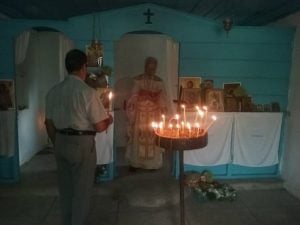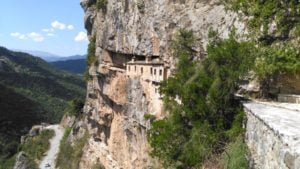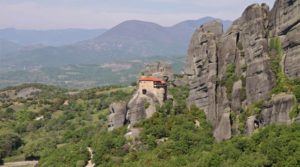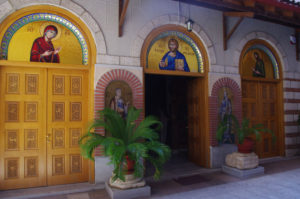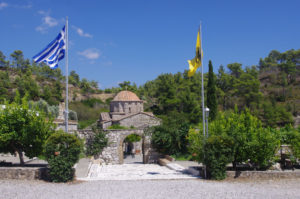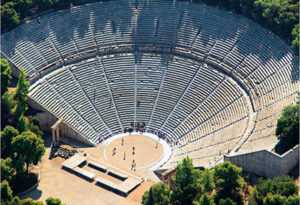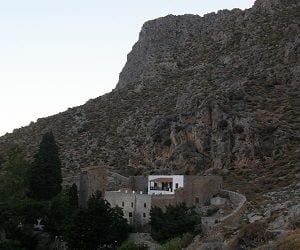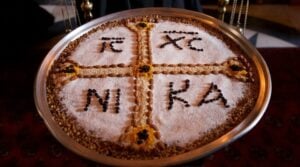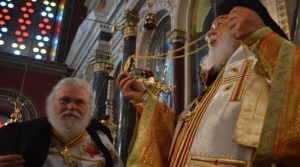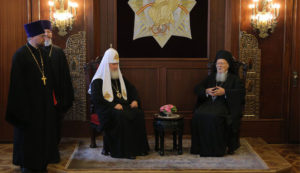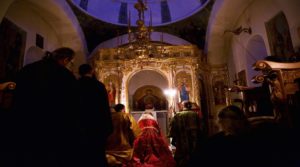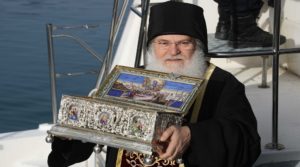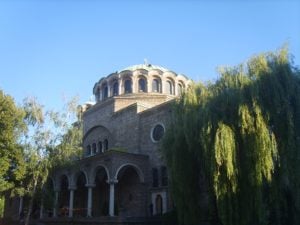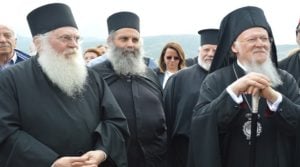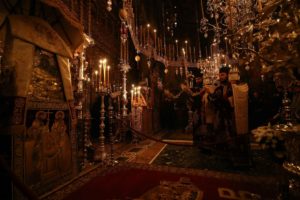
The Holy Monastery of Saint Theodora is in the centre of Thessaloniki. Our first information concerning its history comes from the Life of the saint.

When she went there to be a nun at the age of 25 (in the year 837), the monastery was dedicated to the First Martyr, Saint Stephen.
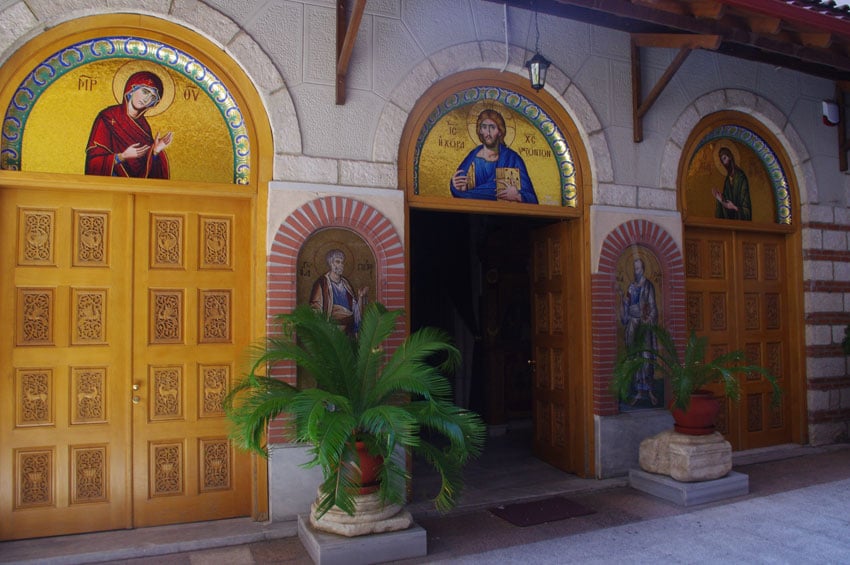
The entrance to the main church.

The first church of the monastery was probably the same shape, in architectural terms, as the church of Holy Wisdom (Ayia Sophia), though, naturally, on a smaller scale.
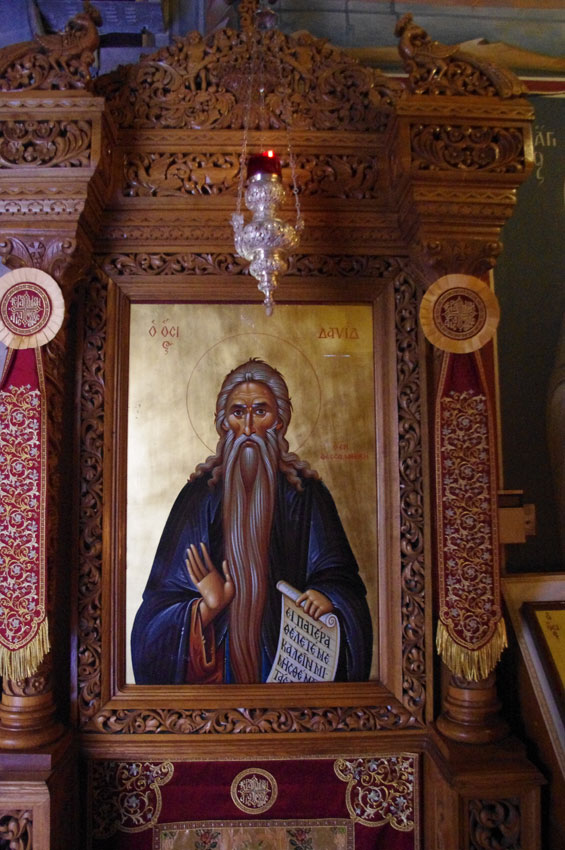
After the translation of the relics of Saint Theodora, in August 893, the monastery was renamed in her honour.
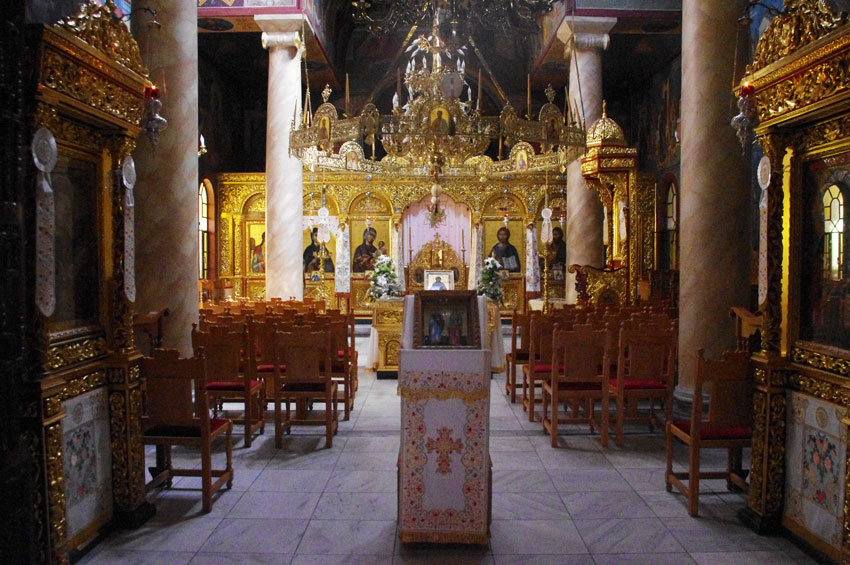
From the beginning it was a coenobium. We don’t know when and for what reasons it ceased to be so and began to function as a parish church. All we know is that this occurred in the 18th century.

The sister of the Archbishop of Thessaloniki, Saint Neilos Kavasilas, and the mother of Saint Nikolaos Kavasilas Hamaetos.

In 1430, when Thessaloniki fell to the Turks, they broke up the holy relics of the saint. The monastery was not taken over, however, nor was it used as a mosque.
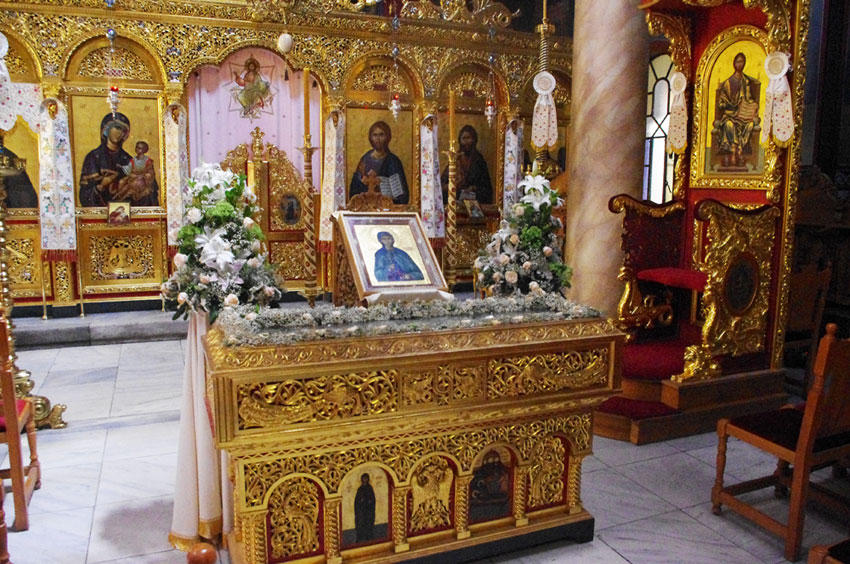
We commemorate Saint Theodora on 3 August, with a splendid feast. On that day, the holy relics of the saint are brought to the centre of the church.

The main church of the monastery was badly damaged in the conflagration of 1890, and then that of 1917 utterly destroyed it.

Detail from the wooden, carved iconostas.

The reliquary containing the holy relics of Saint Theodora.
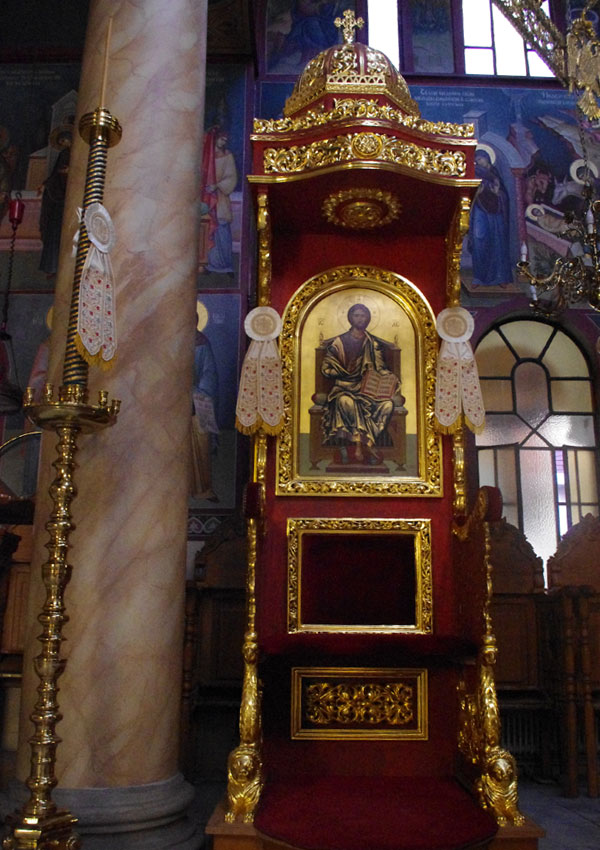
The bishop’s throne.
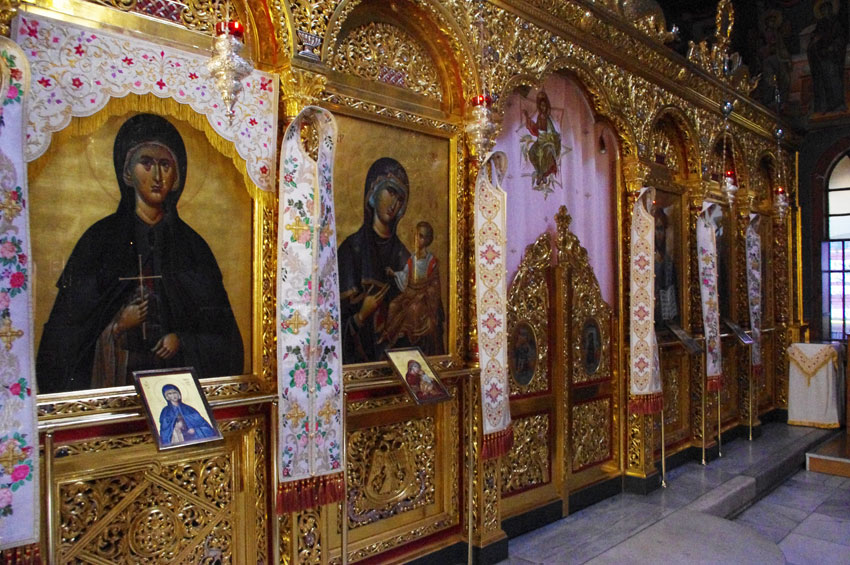
The iconostas in the church.

The wall-paintings in the church.

The new church was built in 1935, near the one which had been destroyed, and in 1957, Metropolitan Panteleïmon I had the western wing of the monastery built, which functioned initially as a student hostel and then as an Ecclesiastical School.
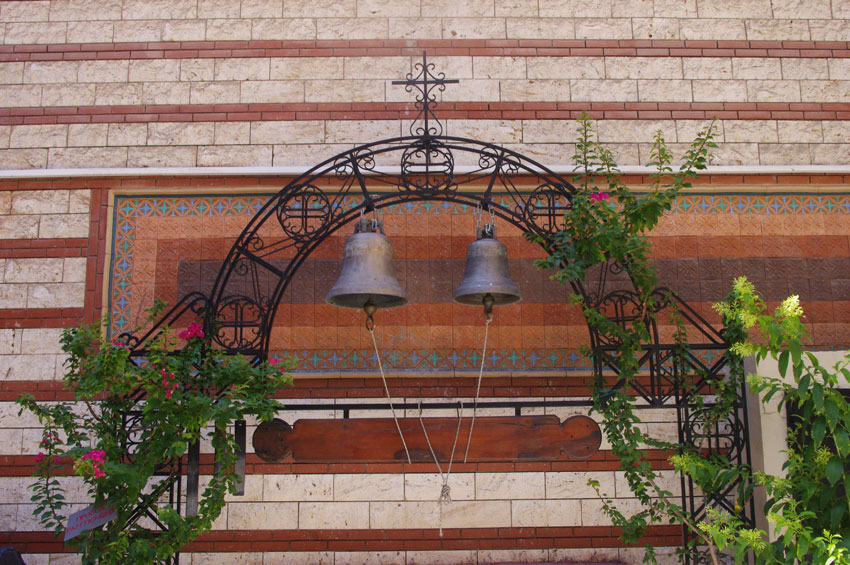
The monastery has five dependencies under its care in the Metropolis of Thessaliniki: 1. The church of Saint Anthony; 2. The chapel of Saint Nikolaos Tranos; 3. The church of Saint Panteleïmon; 4. The chapel of Our Lady the Compassionate; and 5. The church of Saint David.

The new wing of the monastery.
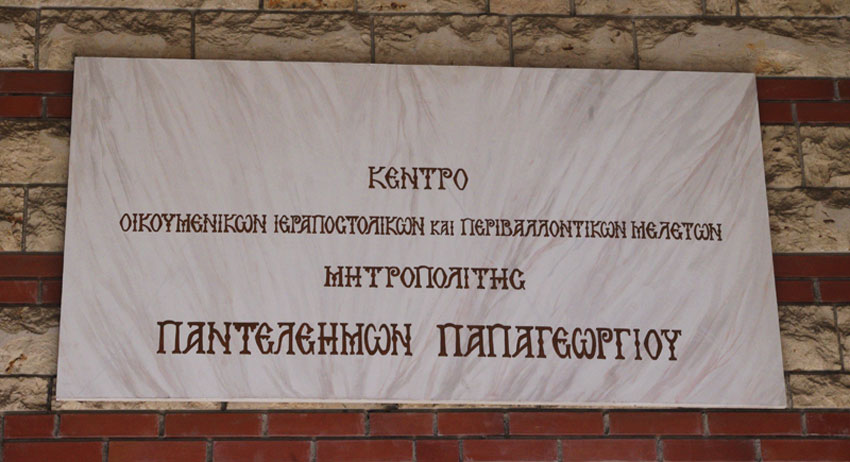
Since 1974 it has functioned as a men’s monastery, while in 1989, the Center for Hagiological Studies of the Metropolis of Thessaloniki was established on the site.

The abbots of the monastery since its reconstitution.

Metropolitan Ioannis of Langadas, Liti and Rentina, Metropolitan David of Grevena, and the late Metropolitan Vasileios of Elasson all served as abbots of the monastery.
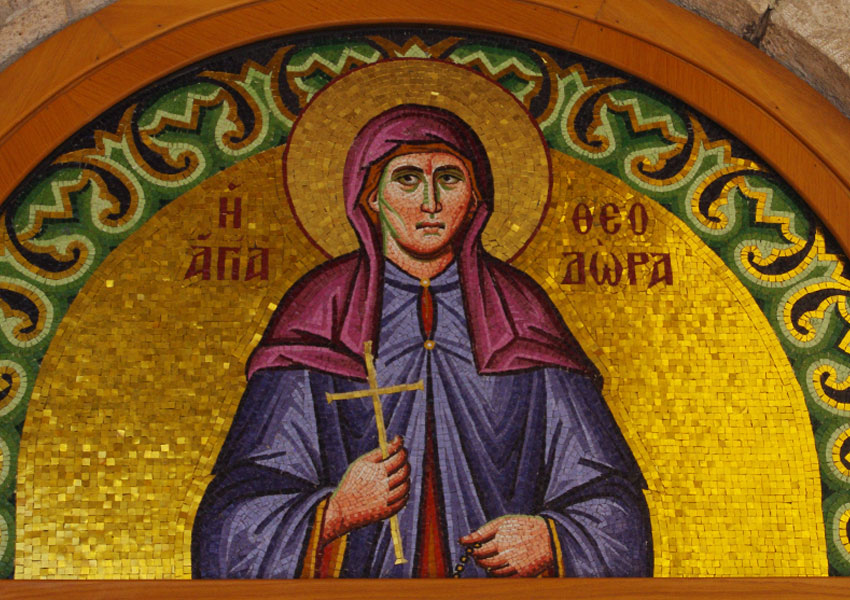
‘Through her prayers, Christ our God, save our souls’.


